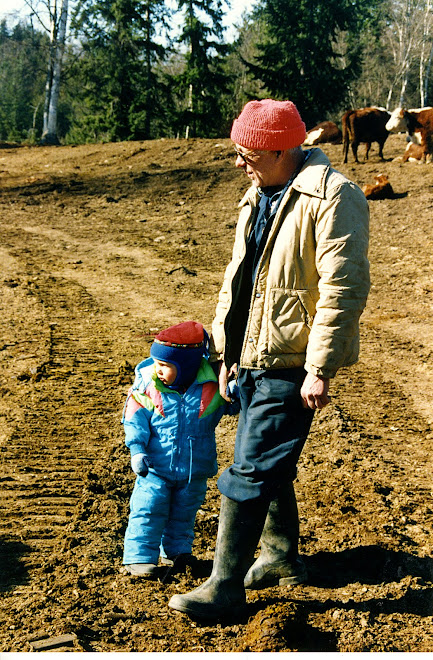Our ancestry with the Ngati Awa is through my great-grandmother's family. My great-grandmother was named Annie and her great-grandmother was Mere Te Wia, daughter of Tikitu, a Ngati Awa Chief.
My grandmother Dulcie, with her mother Annie.
Tikitu was chief during the time when the Ngati Awa were accused of treason by the Crown. He is one of the many Ngati Awa chiefs to attend a "hui or runanga" (meeting) where it was resolved to form a "aukati"(a line drawn in the sand) to keep others out of Ngati Awa territory.
A few months after the hui, on July 22 1865, a ship called the "Kate" carrying James Fulloon, an agent of the Crown and relative of the chief Apanui Hamawaho (of the Te Mautranui) crossed into Ngati Awa territory. Fulloon insulted his own relatives and in retaliation was killed as well as most of the passengers on board the Kate. This act was viewed as a rebellion by the Crown, which it was not, and led to a number of attacks against the Ngati Awa. After a month of battles the Ngati Awa surrendered to the Crown. A number of the Ngati Awa were tried and either executed or sent to prison. What followed were many years of struggle as the community attempted to rebuild with many of the leaders gone and being branded as "tangata hara" - criminals.
Credits to the Journal of the Polynesian Society
The Ngati-Awa were a people that did not easily accept domination by others. Their resistance to being conquered had led to some conflicts with neighboring "iwi" (tribes). One such battle led by Rahiri drove the Ngati-Awa out of many of their strongholds. Whereas the Ngati-Awa were considered a friendly people who lived with the tribes they "conquered" in equality, such was not their fate when Rahiri attacked. The Ngat Awa were forced to flee for their lives and were termed as "dogs - their bones undeserving of a resting place. They were piled into creek beds and placed in heaps in rocky places and received no honor". Credits to the Journal of the Polynesian Society
It is reassuring today that despite the challenges and loss from the past that the Ngait Awa have rebuilt themselves without access to government resources or a tribal trust board. Today there is a tribal authority, radio station, College, and a meeting house that was taken was returned in 1996. Once all the grievances of the past are resolved the tribe's motto, taken from the dying words of Ngati Awa and Ngai Tuhoe cheif Te Mautaranui, will take on a new and more positive meaning: He manu hoa ahau, he pi ka rere - I am a fledgling, a newborn bird just learning to fly. Credits to the "Ngati Aa Today" Te Ara Encyclopedia of New Zealand. March 2009
There is much strength to be taken from this history by our family as we struggle with our losses.
I reach out over time, to my ancestors,
the Ngati Awa,
their bony white hands clasp mine.
They understand betrayal and loss.
Lands were confiscated, accusations made.
Decimated and dishonored,
Not even their bones would be given a resting place,
pushed into piles with rocks, dirt.
Treated by their conquerors as dogs, cattle.
It would be many years before there was justice.
There is comfort in a shared history,
we take the strength of their eventual victory.
Never feel alone, our paths are one.




























